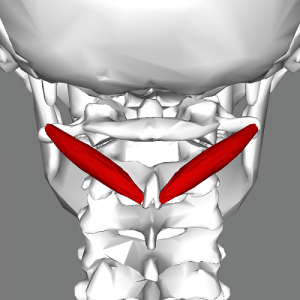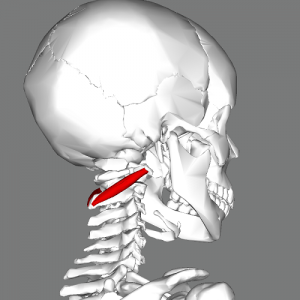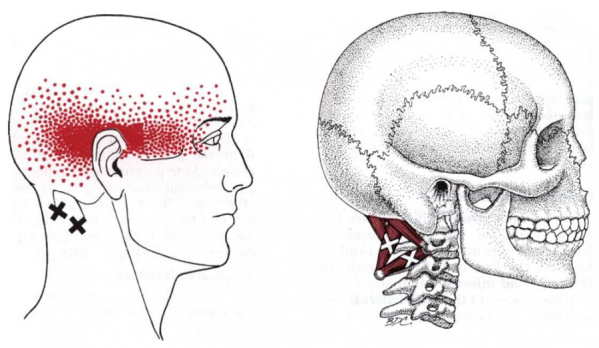Obliquus Capitis Inferior: Difference between revisions
mNo edit summary |
m (deleted pubmed) |
||
| Line 36: | Line 36: | ||
== Trigger Point Referral Pattern<ref name="T&S" /> == | == Trigger Point Referral Pattern<ref name="T&S" /> == | ||
[[Image:OCI RCPM TrP Referral.png|center|600x348px|OCI_post_view]] | [[Image:OCI RCPM TrP Referral.png|center|600x348px|OCI_post_view]]<div class="researchbox"> | ||
<div class="researchbox"> | |||
</div> | </div> | ||
== References == | == References == | ||
Revision as of 18:12, 6 June 2018
Original Editor - Evan Thomas
Lead Editors - Evan Thomas, WikiSysop, Tarina van der Stockt and Kim Jackson
Description[edit | edit source]
Obliquus Capitis Inferior (also known as the Inferior Oblique) is a small muscle that runs posteriorly and inferomedially from C1 to C2. It is situated under the deep cervical vein and comprises the inferior boarder of the suboccipital triangle.[1] It is the only suboccipital muscle that does not attach to the skull.[2]
Origin[edit | edit source]
Base of spinous process and adjoining lamina of the axis.[3]
Insertion[edit | edit source]
Along the inferior aspect of the tip of the transverse process of the atlas.[3]
Nerve Supply[edit | edit source]
Suboccipital nerve or dorsal ramus of cervical spinal nerve (C1).[3]
Blood Supply[edit | edit source]
Vertebral artery and the deep descending branch of the occipital artery.[3]
Action[edit | edit source]
Ipsilateral rotation of the atlantoaxial joint.[1]
Trigger Point Referral Pattern[2][edit | edit source]
References[edit | edit source]
- ↑ 1.0 1.1 Agur AMR, Dalley AF (2012). Grant's Atlas of Anatomy (13th ed). Philadelphia, PA: Lippincott Williams & Wilkins.
- ↑ 2.0 2.1 Travell JG, Simons DG, Simons LS (1998). Travell and Simons' Myofascial Pain and Dysfunction: The Trigger Point Manual, Volume 1: Upper Half of Body (2nd ed). Baltimore, MD: Williams & Wilkins.
- ↑ 3.0 3.1 3.2 3.3 http://www.anatomyexpert.com/structure_detail/5213/









